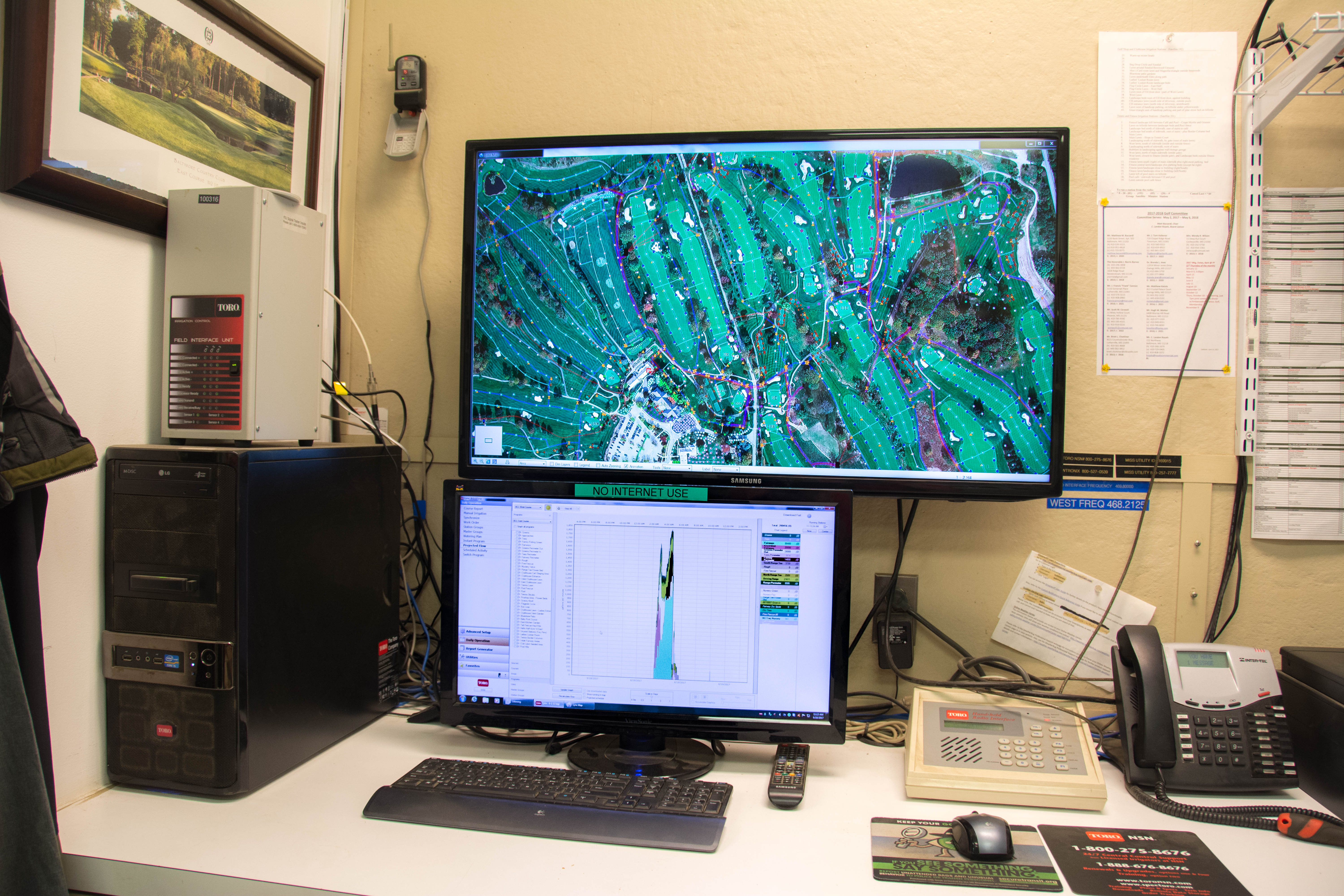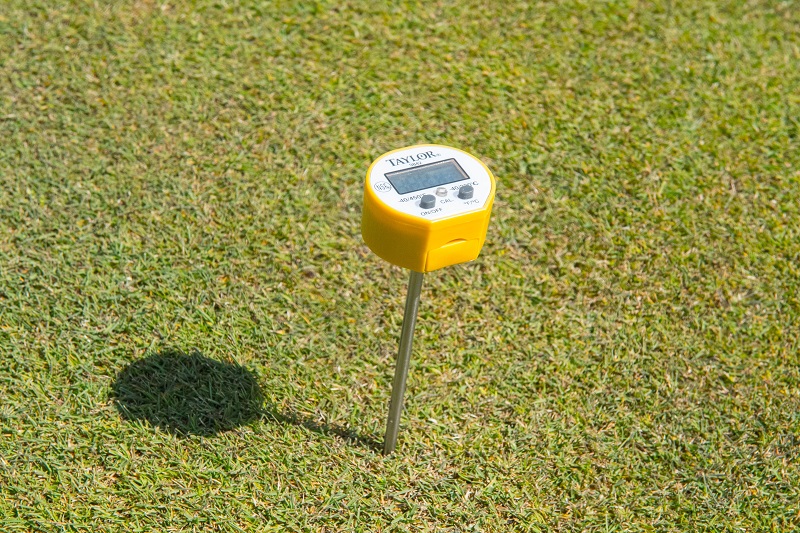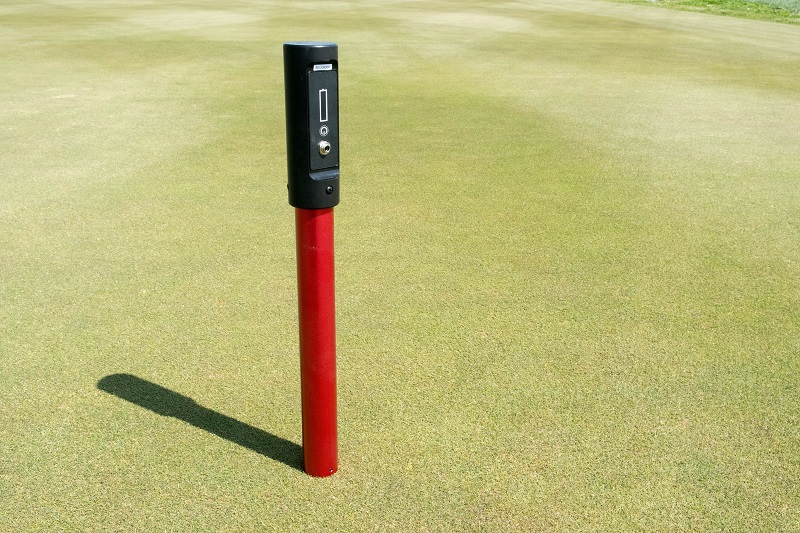Irrigation scheduling must take plant water requirements and soil intake capacity into account to prevent excessive water use that could contribute to leaching and runoff. Plant water needs are determined by ET rates, recent rainfall, recent temperature extremes, and soil moisture. ET rates and soil moisture replacement should determine the irrigation schedule. Because electric/mechanical clocks cannot automatically adjust for changing ET rates, frequent adjustment is necessary to compensate for the needs of individual turfgrass areas using these older systems. In low-maintenance areas, such as golf course roughs and, possibly, fairways, waiting until visual symptoms appear before irrigating is an acceptable method for determining irrigation needs.
The amount to irrigate is important as well; irrigating too shallowly encourages shallow rooting, increases soil compaction, and favors pest outbreaks while over-irrigating can lead to leaching and runoff. For golf greens and tees, the majority of roots are in the top several inches of soil. For fairways and roughs, use infrequent, deep irrigation to supply sufficient water for plants and to encourage deep rooting.
Best Management Practices
- The reliability of older clock-control station timing depends on the calibration of the timing devices; this should be done periodically, but at least seasonally.
- An irrigation system should be shut off after 0.25 to 0.5 inches of rain falls.
- Avoid use of a global setting; make adjustments to watering times per head.
- Permanent irrigation sprinklers and other distribution devices should be spaced according to the manufacturer’s recommendations.
- Spacing should also be based on average wind conditions during irrigation.
- Install wireless soil moisture systems to prevent damage from aeration.
- Use soil moisture sensors to bypass preset schedules or for on-demand irrigation.
- Use multiple soil moisture sensors to reflect soil moisture levels.
- Place soil moisture sensors in the root zones of representative locations within each irrigation zone and in the driest irrigation zone of the irrigation system.
- Base irrigation run times on actual site conditions for each head and zone and adjust as needed based on current local meteorological data.
- The computed daily ET rate can be used to adjust run times to meet the turf’s moisture needs.
- Manually adjust automated ET data to reflect wet and dry areas on the course.
- Irrigation quantities should not exceed the available moisture storage in the root zone.
- The irrigation schedule should coincide with other management practices, such as the application of nutrients, herbicides, or other chemicals.
- Irrigation should occur in the early morning hours before air temperatures rise and relative humidity drops.
- Visually monitor for localized dry conditions or hot spots to identify poor irrigation efficiency or a failed system device.
Next: Metering




